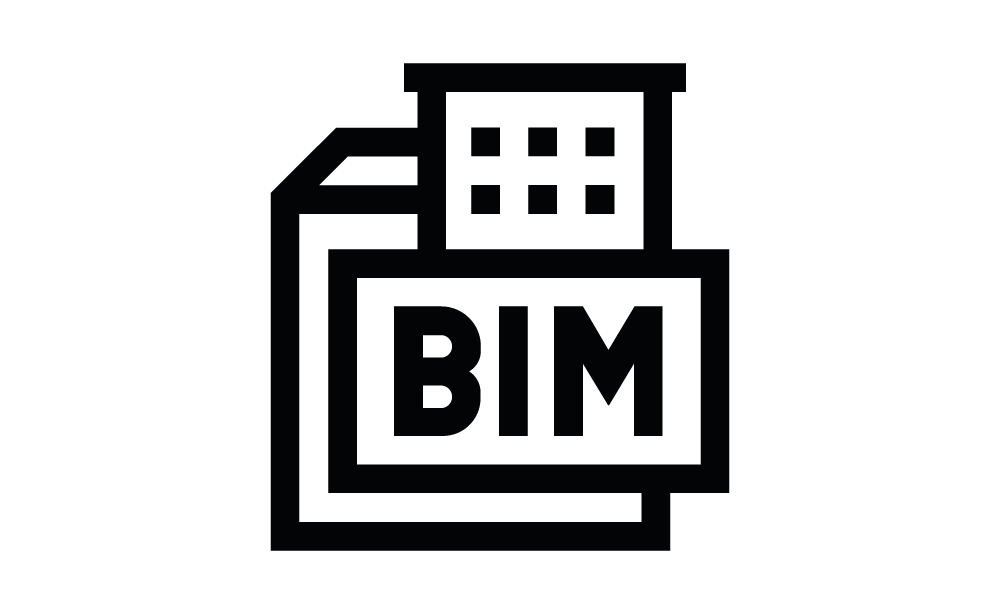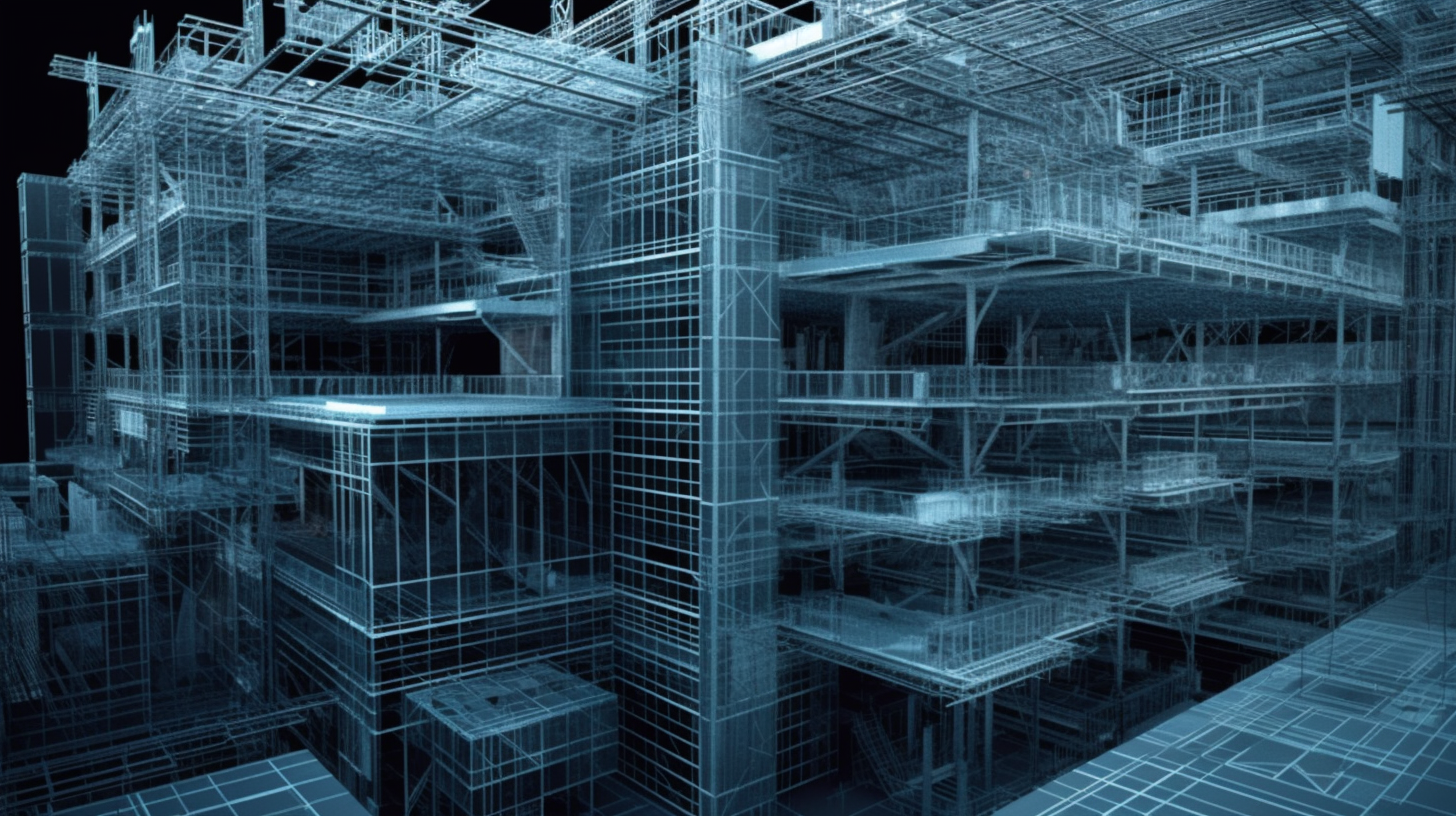BIM | Building Information Modeling
Introduction to BIM Technology: A Comprehensive Overview for the Digital Construction Industry
Digital transformation has played a significant role in nearly every industry in recent years, and the construction industry is no exception. Building Information Modeling (BIM) is an innovative technology, framework and programming language that has the potential to revolutionize the way we build. In this article, we provide a comprehensive overview of BIM and how it can benefit your business.
What is BIM?
BIM stands for building information modeling. It is a digital technology that enables more efficient and effective planning, design, construction and management of buildings. BIM allows all relevant information about a construction project to be captured, stored and managed in a single digital model. This simplifies collaboration between different parties, such as architects, engineers, contractors and building owners, and ensures better communication and coordination.
The benefits of BIM
The adoption of BIM in the construction industry offers a variety of benefits, including:
- Efficiency: BIM enables more efficient design and coordination by providing access to all relevant information in a centralized digital model. This reduces the time spent searching for and sharing information and helps avoid errors and delays.
- Cost savings: By identifying problems and potential conflicts early, owners and contractors can save costs that would normally be incurred through rework and delays.
- Communication: BIM improves communication and collaboration between different parties by simplifying information exchange and reducing misunderstandings.
- Sustainability: BIM helps reduce the energy consumption and environmental impact of buildings throughout their lifecycle by enabling better planning and management of resources.
- Facility management: BIM models can also be used after a building is completed to optimize its operation and maintenance.
BIM software and tools
BIM software and tools
There are various software tools and platforms that support BIM and allow digital models to be created and managed. Some of the most popular BIM software solutions are:
- Autodesk Revit: A powerful BIM software designed specifically for architects, engineers and contractors. Revit allows you to design and visualize building models in 3D and includes features for collaboration and managing project information.
- Graphisoft Archicad: Another popular BIM software that features ease of use and powerful modeling capabilities. Archicad is particularly suitable for architects and designers and supports the creation of detailed 3D models and technical drawings.
- Bentley Systems OpenBuildings Designer: This BIM tool is tailored to the needs of engineers and contractors and enables building models to be designed, analyzed and documented. OpenBuildings Designer also supports geospatial information integration and collaboration between different disciplines.
- Trimble Tekla Structures: A BIM solution focused on modeling steel and concrete structures. Tekla Structures provides comprehensive tools for the design, construction and fabrication of structural components and enables the creation of accurate fabrication drawings and data.
BIM standards and guidelines
BIM standards and guidelines
To ensure the successful use of BIM technologies, it is important to follow standards and guidelines that ensure collaboration and interoperability between different systems and parties. Some of the most important BIM standards are:
- ISO 19650: An international standard that governs the organization and digitization of information in the construction industry. ISO 19650 provides guidelines for the management of information throughout the lifecycle of a construction project and defines the requirements for the implementation of BIM systems.
- Industry Foundation Classes (IFC): An open data model that enables the exchange of BIM information between different software tools and platforms. IFC ensures that all relevant data in a BIM project can be managed and exchanged in a consistent and interoperable way.
- buildingSMART: An international organization dedicated to promoting open standards and interoperability in BIM, buildingSMART develops and supports a variety of standards, tools and resources that simplify and enhance the use of BIM technologies.
Application areas of BIM
Application areas of BIM
BIM offers a wide range of applications in different phases of a construction project:
- Planning and design: BIM makes it possible to design and visualize building models in 3D to get a better idea of the final design. It also supports the analysis of building performance and the optimization of designs in terms of energy efficiency and sustainability.
- Construction: BIM helps coordinate construction operations and resources by providing access to all relevant information and identifying potential conflicts early on. This leads to more efficient and cost-effective construction.
- Operation and maintenance: BIM models can also be used after a building is completed to optimize its operation and maintenance. Facility managers can access the BIM model to obtain information about building systems and components and plan maintenance work more efficiently.
- Renovation and demolition: BIM can be used to plan renovation and demolition work by providing detailed information about existing structures and materials. This makes it possible to better coordinate work and minimize environmental impacts.
BIM implementation and training
BIM implementation and training
Successful implementation of BIM in a company requires both technical and organizational changes. Some steps that can be helpful are:
- Develop BIM strategy: A clear strategy and vision for implementing BIM in your organization is critical. Identify your goals and requirements to determine which BIM tools and processes best fit your needs.
- Evaluate software and hardware: Investigate different BIM software solutions and select the one that best fits your business and projects. Also, make sure you have the necessary hardware to use the BIM software effectively.
- Training and skill building: Invest in training your employees to improve their skills in using BIM technologies. This can be done through training, workshops and online resources.
- Adapt processes and workflows: Adapt your existing processes and workflows to meet the requirements of BIM to ensure smooth integration
- Encourage collaboration: BIM requires close collaboration between different departments and partners. Encourage communication and information sharing to realize the full potential of BIM.

BIM is a revolutionary technology that has the potential to change the way we build. By implementing BIM in your company, you can benefit from more efficient planning, better communication and significant cost savings.
To get the most out of BIM, it's important to develop a clear strategy, select the right tools, and invest in training your staff. With the right preparation and implementation, BIM can provide a real competitive advantage for your company.
